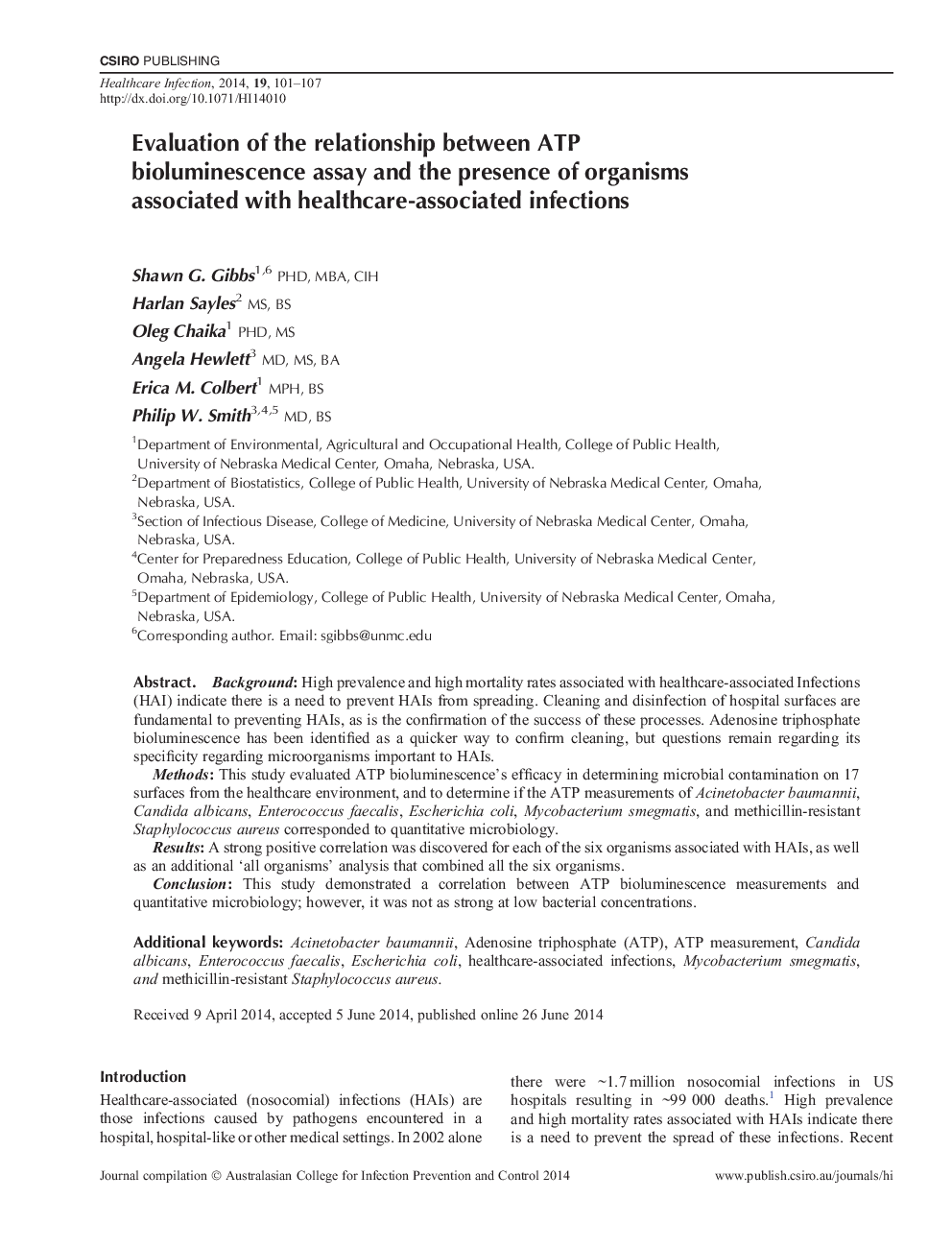| Article ID | Journal | Published Year | Pages | File Type |
|---|---|---|---|---|
| 2679561 | Healthcare infection | 2014 | 7 Pages |
BackgroundHigh prevalence and high mortality rates associated with healthcare-associated Infections (HAI) indicate there is a need to prevent HAIs from spreading. Cleaning and disinfection of hospital surfaces are fundamental to preventing HAIs, as is the confirmation of the success of these processes. Adenosine triphosphate bioluminescence has been identified as a quicker way to confirm cleaning, but questions remain regarding its specificity regarding microorganisms important to HAIs.MethodsThis study evaluated ATP bioluminescence's efficacy in determining microbial contamination on 17 surfaces from the healthcare environment, and to determine if the ATP measurements of Acinetobacter baumannii, Candida albicans, Enterococcus faecalis, Escherichia coli, Mycobacterium smegmatis, and methicillin-resistant Staphylococcus aureus corresponded to quantitative microbiology.ResultsA strong positive correlation was discovered for each of the six organisms associated with HAIs, as well as an additional ‘all organisms’ analysis that combined all the six organisms.ConclusionThis study demonstrated a correlation between ATP bioluminescence measurements and quantitative microbiology; however, it was not as strong at low bacterial concentrations.
